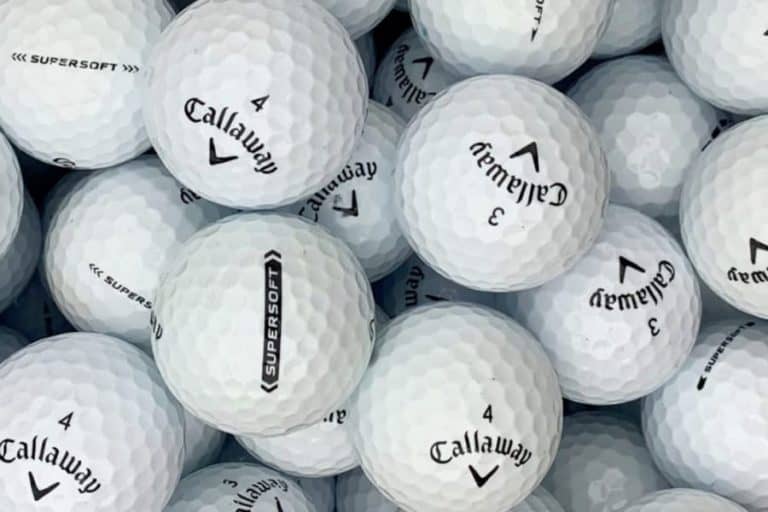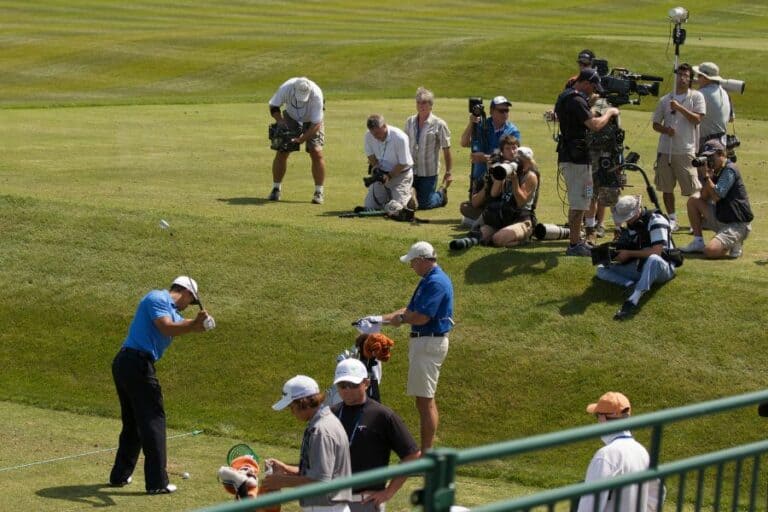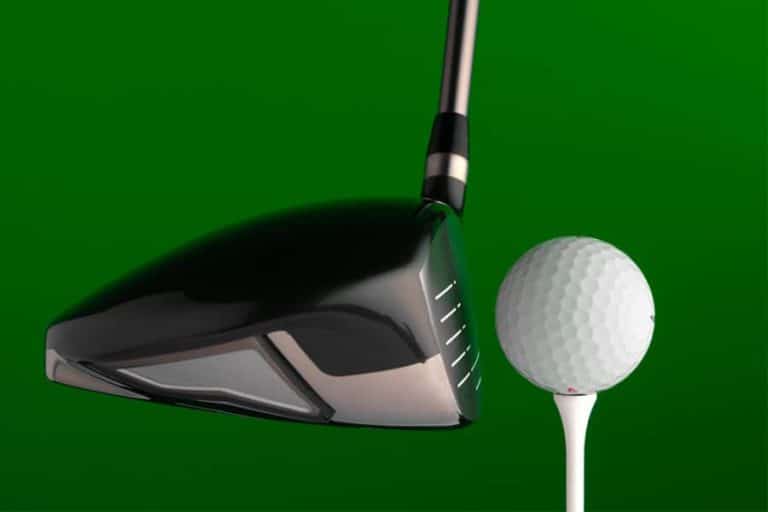How To Fix A Hook In Golf: Causes And Solutions (with Images)

If you’re experiencing trouble with your golf hooks, learn what the causes and types of hooks are. Find out more on how to fix a hook in golf.
Any golf lover knows that there’s nothing quite like the feeling of landing a perfect shot. But sometimes, even the best players can end up with a less-than-ideal result. This is often due to a type of golf shot known as a “hook.” So, how to fix a hook in golf?
In this concise guide, we will explore simple yet effective ways to help you correct that hook and regain control over your golf shots.
I. What is a hook?
Let’s start by tackling the most basic question first. What exactly do we mean by a hook shot?
In golf, the hook is a shot that curves sharply to the left (for right-handed players) or to the right (for left-handed players). It can be caused by a number of things, including improper grip, incorrect club selection, or simply swinging too hard. Regardless of the cause, hooks can be frustrating for players of all skill levels.
However, with a little practice, it’s possible to correct your golf swing, straighten out your golf swing and get back on track for that perfect game.
II. Causes of a hook in golf
There are several different factors that can contribute to a hook. The most common ones are as follows:
1. Gripping The Club Too Tightly
Have you ever been on the golf course, about to take a shot, and felt your heart racing? Your palms start to sweat, and you grip the club tighter and tighter. Suddenly, your shot goes wildly off course, sailing into the woods or plunking into the water.
If this sounds familiar, you may be guilty of gripping the golf club too tightly. In golf, as in life, it’s important to keep a firm but gentle grip.

A death grip on the club will only lead to disaster. An extra strong grip might be the culprit causing your golf balls to curve from right to left.
2. Swinging Too Hard
Any avid golfer knows that hooking the ball is one of the most frustrating things that can happen on the course. Not only does it result in a loss of distance, but it also often leads to a wild shot that ends up in the rough or even out-of-bounds.
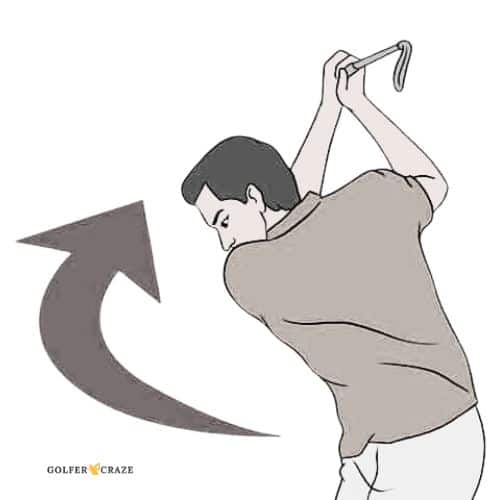
While there are a number of potential causes of a hook, one of the most common is swinging too hard. When you swing too hard, you lose control of the club, and your shots tend to go off to the right.
3. Using The Wrong Club
Hooking the ball is one of the most common mistakes in golf. It happens when the clubface hits the ball too far to the left (for a right-handed golfer), causing golf balls to curve sharply to the left. While hooking can occasionally lead to a lucky shot, it’s generally an undesirable result.
There are a few different things that can cause a hook, but the most common is using the wrong club. If you’re hitting a 7-iron, but you should be hitting a 5-iron, chances are good that you’ll hook the ball.
4. An Incorrect Stance
Maintaining the correct stance is vital to playing a good game of golf. However, many beginner golfers make the mistake of adopting a closed stance.
This can result in a number of problems, including hooking the ball. When taking your stance, be sure to place your feet shoulder-width apart and keep your weight evenly distributed.
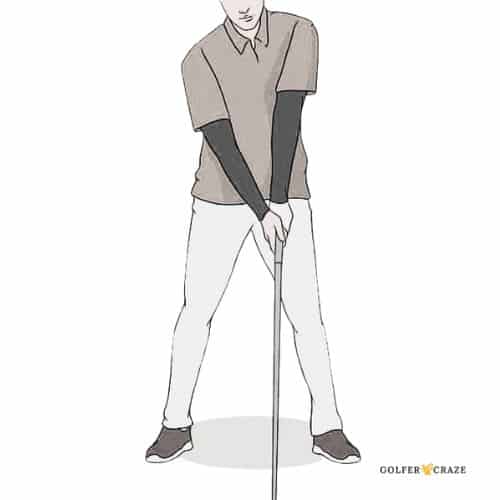
Your hands should be aligned towards the target and in a more neutral position with your right index finger under the handle in the trigger position.
You should also ensure that the clubface is square to the ball. Check the position of the clubface during the follow-through. If you adopt these simple steps, you’ll be well on your way to improving your game.
5. Improper Weight Distribution
Many golfers struggle with a hook, which is caused by improper weight distribution. When the weight is shifted too far to the left, it creates a rotational force that pulls the club head across the ball. This can cause golf balls to veer sharply to the left, making it difficult to stay on the fairway.
To correct this problem, try shifting your weight slightly to the right during your swing. This will help to keep the club head on track, and you should see a dramatic improvement in your accuracy.
III. Ways on how to fix a hook in golf
While repeated hooks can be frustrating, the good news is that they are usually fairly easy to fix. Below, we’ll discuss some of the most effective ways to fix this problem.
1. Keep A Firm But Gentle Grip
If you find yourself hooking the ball more often than not, try loosening your grip slightly. This will help you keep the clubface square to the ball at impact, preventing the hook. Of course, you don’t want to grip the club too loosely, either. A good way to find the perfect grip is to hold the club in your fingers, not your palm.
You should be able to feel the weight of the clubhead in your fingers, but it shouldn’t be so loose that it feels like it’s going to fall out of your hand. With a firm but gentle grip, you’ll be able to maintain control of the club, hit straighter, more consistent golf shots, and avoid hooks.
2. Use A Lighter Golf Club
If you’re struggling with a hook, try using a lighter golf club. A lot of golfers think that they need to swing harder to hit the ball further, but this is often not the case. Swinging too hard can cause you to lose control of the club, leading to hooks and slices.
Instead of swinging harder, try using a lighter club. This will help you maintain control of the clubhead and produce straighter golf shots.
3. Swing Easy
To avoid hooks, try swinging with an easy tempo and make sure you’re not overswinging. Swinging easily doesn’t mean you have to hit the golf balls shorter, it just means you need to be more controlled in your swing.
With a little practice, you’ll be able to find the perfect tempo for your golf swing and start hitting straighter shots.
4. Warm-Up Before You Play
Golf is a game that requires a lot of coordination and precision. If you’re not warmed up properly, your shots are going to suffer. Before you tee off, take a few minutes to warm up your muscles.
Hit some practice balls and stretch your arms and legs. By taking the time to warm up, you’ll be able to hit straighter shots and avoid hooks.
IV. What’s the difference between hook vs slice?
Here’s a basic explanation of the difference between golf hook vs slice:
In golf, a hook occurs when the ball curves sharply to the left (or right for left-handed golfers), while a slice curves sharply to the right (or left for left-handed golfers).
Both shots are caused by poor clubface control during impact. The main difference between a hook and a slice is the direction of the curvature.
V. Pros and cons of fixing a hook in golf
Fixing a hook shot in golf has its pros and cons. Let’s unpack these individually:
Pros: Correcting a hook can result in more accurate shots and better control over your game. Heavier clubs can also be used to provide stability to your swing, preventing the clubface from closing too much at impact and producing a hook shot.
Cons: It can be extremely challenging for some golfers, especially those who are not used to it. It can take time and practice to get accustomed to the new swing mechanics required to avoid hooking the ball.
Additionally, using heavier clubs can be more challenging to swing and require more physical exertion from the player.
VI. How do I correct a left to right ball flight?
A left to right ball flight in golf can be corrected through several techniques. Here are 5 of them:
- The first technique is adjusting the grip. The grip should be adjusted so that the hands are rotated slightly to the right for right-handed golfers and slightly to the left for left-handed golfers.
- Adjusting the stance can also correct the ball flight. The stance should be adjusted to ensure the shoulders and feet are aligned towards the target.
- Try adjusting the loft of the club. A lower lofted club will typically produce a more left to right flight, whereas a higher lofted club will produce a more right to left flight.
- Using training aids like hitting nets or golf simulators can also help improve swing accuracy.
- If these techniques do not work, seeking lessons from a professional golf instructor may be necessary to identify and correct underlying swing problems.
VII. What’s the difference between stiff flex and regular flex?
A stiff flex shaft is designed for golfers with faster swing speeds. It is less flexible than a regular flex shaft and requires more swing speed to bend it. This makes it a better choice for golfers who generate a lot of clubhead speed, as it can offer more control over the ball’s flight and help prevent hooking.
Whereas, a Regular flex shafts are suitable for golfers with slower swing speeds and can help generate more power and distance, making them ideal for straightening out hook shots. However, for golfers with faster swing speeds, regular flex shafts may not provide enough control over the ball’s flight, resulting in inconsistent shot patterns.
Read More: Stiff Vs. Regular Flex
VIII. can a stiff shaft stop a hook?
Choosing a stiff shaft can potentially help prevent hook shots in golf. This is because a stiff shaft provides more control and stability, reducing the likelihood of the clubface closing too much at impact and producing a hook.
Golfers can order shafts with different stiffness levels from online shops to find the one that suits their swing style and helps them hit their golf balls straight.
Practicing on challenging courses can also improve a player’s ability to avoid hooks.
Conclusion
Fixing a hook in golf is all about figuring out what’s causing the problem and then addressing it. We’ve looked at three different types of hooks and the causes behind them, so you can start to diagnose your own game.
If you’re fighting a hook, now you know what might be causing it and some solutions to correct the issue. Don’t let this pesky problem keep you from shooting lower scores. Use these tips to help fix your hooks and get back on track. Soon you will be hitting the ball straight down the fairway again.





